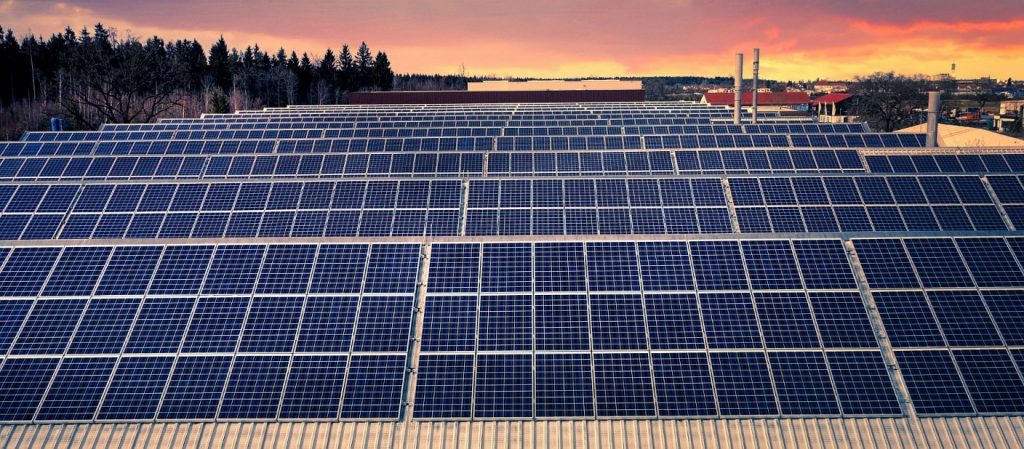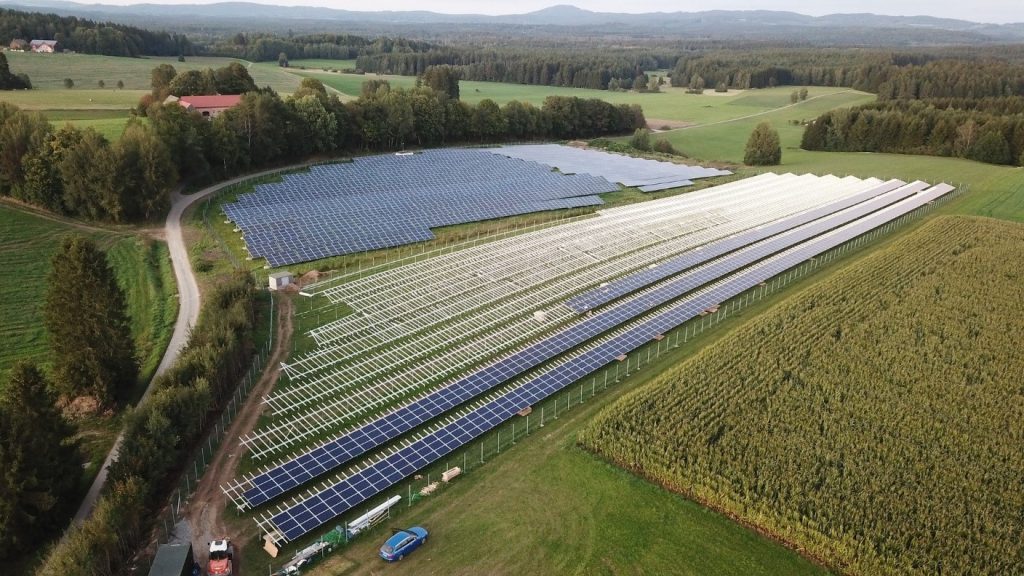What is a solar microgrid and how does it work?
Solar microgrids are a hot topic in the world of solar energy. And for good reason. As the world’s appetite for renewable energy grows in response to more advanced tech, difficulties accessing fossil fuels, and mounting concerns about climate change, solar is booming .
Most solar systems, both residential and commercial, are linked to the main grid, but this isn’t the only way that you can harness solar energy. For many, solar microgrids may be a better option, helping you build energy independence and enjoy greater energy reliability. But what is a solar microgrid?
There are many reasons to start using solar, both for residential users and for businesses. In this article, we explore the basics of solar microgrids, how they work, the benefits they offer, and what you can expect to pay to join one.
What is a solar microgrid?
A microgrid is an integrated system, or network, that is used to collect/create energy and then store and distribute it across other areas of the grid. Microgrids are separate from large centralized energy grids but are not necessarily low in power capacity as the name might suggest. Generally, they are used in areas where there is no power grid, where there is unstable access to a grid, or in a place of special importance that cannot abide potential power outages. They are not a new concept, and are commonly used to manage the energy produced by fossil fuels.
A solar microgrid is simply a microgrid that is supplied by energy harnessed by solar panels.
A typical solar microgrid consists of a group of solar panels in a central location (otherwise known as a “hub”). These panels collect solar energy, which is converted to a usable form and either stored using batteries or distributed to other locations linked to the microgrid.
Microgrids are most often found in rural or isolated areas where it is difficult or economically unviable to expand larger grid infrastructure. For example, an isolated mountain community may use a microgrid to ensure access to energy for everyone.
Microgrids not only allow remote and isolated areas to enjoy the benefits of being connected to a larger grid, but they can also make energy access more reliable in the case of wide-scale outages caused by weather or other unexpected events. This makes them useful even in populated areas, for instance in city hospitals and schools. Even homeowners in urban areas can benefit, as by setting up their own solar microgrids they can build energy independence from the grid, gain control over energy usage, and reduce energy bills long-term.
With the increased interest in solar energy around the world, solar microgrids are becoming more common, and even major energy companies are taking interest.

The difference between solar and solar microgrids
Solar power set-ups come in different forms. Most commonly, solar panels are used to collect solar energy and are connected to a major grid. For example, most residential solar set-ups operate in this way, enabling the solar panels to feed or draw from the main grid dynamically depending on energy collection and usage levels. In order to operate independently of the main grid, the individual home would need extra equipment like a battery and a specialized solar microgrid inverter.
A solar microgrid is an integrated, independent network that can operate completely separately from the main grid. So, while all solar microgrids are supplied by solar, not all solar energy is linked to a microgrid.
However, many microgrids are linked to main grids as well as having the capability to operate independently, and they can be either connected or disconnected at will depending on the circumstances. This can further improve reliability and has been very helpful in helping to maintain energy supplies after unforeseen events, such as earthquakes, where a major grid has been damaged.
What are the advantages of microgrids?
The main benefit of using a solar microgrid is the added reliability it can provide to those connected to it. As mentioned above, having an independent system that is capable of “islanding” energy production and distribution is incredibly helpful when the main grid is damaged or unavailable.
This reliability is particularly significant in rural and isolated areas, and in those where the main grid can be unreliable. For example, many rural communities in places like India can struggle to access energy even at the best of times, with unreliable major grid networks and isolated locations posing many challenges. Add in the incidence of destructive events like fires, earthquakes, and floods, and it’s a recipe for disaster. Having access to a microgrid can give such communities an energy lifeline, helping hospitals, homes, and schools keep the lights on at all times. It can also ensure that basic infrastructural equipment such as water pumps remains operational.
Additionally, solar microgrids are an excellent way to reduce reliance on fossil fuels on a community-wide level. This can not only reduce greenhouse gas emissions and contribute to fighting climate change, but can also shield people from fluctuations in energy pricing (such as the huge price surges seen in many parts of the world in recent months) and supply chain issues with traditional fuel sources.
How do solar microgrids work?
Solar microgrids can vary greatly in complexity and size, but they all follow the same basic concepts. Typically, a solar microgrid would look something like this:
- To begin with, a group of solar panels (or photovoltaic array) captures energy from the sun. The type of panels used can vary, but a microgrid will generally consist of high-quality equipment to maximize efficiency. Monocrystalline panels, for example, can achieve efficiency of 20% or more, making them a popular choice for microgrid arrays.
- These panels are connected to a solar charge controller, which acts to regulate the voltage and current of the incoming electricity. This regulation is vital as it converts the electricity into a usable form that won’t damage the equipment in the microgrid, such as batteries.
- All of the energy is then transferred to a combiner box which also works to protect the rest of the system. Additionally, it can reduce energy loss and allow engineers/computers to monitor the performance of the system. It also consolidates all the energy that is being produced into one connection.
- Via this connection, all the energy is channeled to an inverter. This converts the energy from direct current (DC) to alternating current (AC), which makes it suitable for a range of everyday uses such as to power machinery, household appliances, and more. Hoymiles microinverters, for example, can be used effectively in microgrids when paired with a storage system.
- If an excess of energy is being generated at a given time, some of it will be stored in batteries for later use. This step is key in helping communities achieve energy independence. It also eliminates reliance on the main grid and reduces the chance of fluctuations in supply during periods of low production (such as overnight or in bad weather). In some systems, excess energy may be fed into the main grid to maximize efficiency.
- The energy leaving the inverter runs through one or more meters, which track usage of the community or individual users. These meters may be used to determine the pricing for each user.
- From here, it is transported to end users such as individual households, industrial buildings, other business premises, and so on.
In many modern solar microgrids, the entire grid can be connected to or isolated from a larger grid on demand. This ability helps users access power more efficiently and reliably than if they were just connected to either one of the grids.

How much does a solar microgrid cost?
The cost of accessing a solar microgrid can vary greatly, and it involves more than just the cost of solar panels. Pricing depends on the size of the grid, the complexity, and the ownership model, as well as logistical costs dictated by location.
In a community-owned solar microgrid, a common payment model would involve households paying a monthly fee via either a flat rate or based on their usage as monitored by a meter. All the usage fees are then pooled and managed by a central body composed of members of the community and allocated to pay off the cost of installation, repairs, and network upgrades.
Other models may involve a privately owned microgrid. This would be similar in practice to a community-owned grid, but the private company would factor a profit margin into the pricing.
Whether or not a solar microgrid is worth it for you will depend on the level of interest in your community and several other factors. For example, the cost of installation in an extremely remote area will most likely be higher than in a city, but the benefits of having reliable energy access may well outweigh the additional cost.
Hoymiles – the experts in clean, open energy
We’re here to make open energy accessible to everyone. Explore our range of specialized equipment and apps to learn more.
